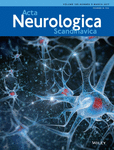Isolated language impairment as the primary presentation of sporadic Creutzfeldt Jakob Disease
Abstract
Objectives
Sporadic Creutzfeldt Jakob Disease (sCJD) is a neurodegenerative disorder that typically presents as a rapidly progressive encephalopathy associated with various neurological features, culminating in akinetic mutism and death. Atypical cases, presenting with an isolated focal may cause diagnostic confusion. We described a series of patients with sCJD presenting with isolated language impairment.
Materials & methods
We report a patient with sCJD referred to the NCJDRSU, who presented with isolated language impairment and subsequently identified all cases of sporadic CJD on the NCJDRSU database (covering the years 1990–2012) with an isolated language impairment presentation.
Results
Nineteen patients (11 females) with sCJD (1.19% of all patients) had an isolated language disorder of at least 2 weeks duration as the first neurological symptom pattern. Mean age at onset was 68.28 years. No specific pattern of language affection was seen in these patients. Further progression usually affected more than one neurological domain, with all patients eventually developing cognitive decline and myoclonic jerks. The median duration of illness was 4 months. CSF 14.3.3 was positive and S100b level was elevated in all patients in whom it was performed. EEG and MRI showed typical features of sCJD in six patients each. Most patients showed MM genotype of PRNP codon 129.
Conclusion
This study highlights the fact that isolated aphasia can be the first neurological symptom approximately in 1% of patients with sCJD. The diagnosis is usually made with appearance of other clinical features and investigation results, but in a small minority, these may not be apparent for relatively long periods.




